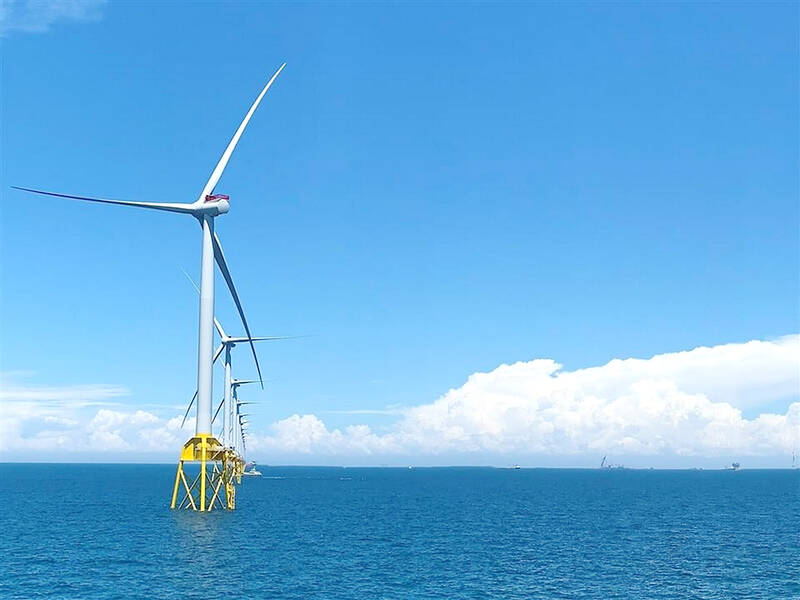“How China Threatens to Force Taiwan Into a Total Blackout” screamed a Wall Street Journal (WSJ) headline last week, yet another of the endless clickbait examples of the energy threat via blockade that doesn’t exist. Since the headline is recycled, I will recycle the rebuttal: once industrial power demand collapses (there’s a blockade so trade is gone, remember?) “a handful of shops and factories could run for months on coal and renewables, as Ko Yun-ling (柯昀伶) and Chao Chia-wei (趙家緯) pointed out in a piece at Taiwan Insight earlier this year.”
Sadly, the existence of these facts will not stop the international media from putting out another score of breathless clickbait articles on this non-issue. The apocalypse, after all, is inherently more interesting than grimly getting by.
Instead of burning energy on clickbait issues, WSJ would have done better to ask why Taiwan doesn’t have more renewables and geothermal (and more waste to energy, currently a tiny fraction of production) in the power mix. After all, Taipei set a record for high temperatures 19 straight days last month. Two key reasons discussed herein previously are Taiwan Power Co’s (Taipower, 台電) longstanding contempt for renewables, and the Council on Agriculture’s decision to nix renewables on small farms, which hurt solar power development. But even more fundamental are issues at the local level that slow renewable energy development.

Photo courtesy of Taisugar
INSTITUTIONAL PROBLEMS
A thoroughly useful paper last year by Shen Chia-ling (沈嘉玲) and Dai Hsing-sheng (戴興盛) explores some of the local problems through interviews and a case study. They identified six major institutional problems at the local level that hinder renewable energy development. First, local governments lack energy governance. That lack is exacerbated by the inability of government systems to handle the multi-dimensional issues of renewable energy, and by the lack of information and public participation in renewable energy development. There are no high-level government criteria determining site selection. Finally, the power is shunted off to the cities, but the costs remain with local communities, who see little for them. These problems then all trigger local protests.
It is notable that together these are commonalities across almost all of the nation’s development programs. See, for example, the long history of local resistance to local water development projects. The lack of improvement and learning at the central government level is depressing.

Photo courtesy of the Changhua County Government
Solar projects especially attract local ire, “forcing the government to repeatedly reduce its solar power installation and capacity targets for this year, which have dropped from 17 to 12 GW,” they say. The pair examine Fenglin Township in Hualien County, which has 74 hectares of solar photovoltaic (PV) projects, with another 1,200 hectares in planning or awaiting approval (not all of that will eventually be built). The projects are largely on lands owned by state entities like Taiwan Sugar, lands that were once indigenous before the Japanese seized them and the Chinese Nationalist Party (KMT) took them from the Japanese after World War II. The area is attempting to develop an eco-tourism based community identity, focused on slow living, according to the authors.
Because land rights are clear, the area is attractive to solar operators. The operators purchase land at market prices and install solar power on it, ironically the ideal situation from the central government point of view. But as Shen and Dai observe, the responsibility for attaining renewable energy goals rests entirely with the central government. Local governments are not mandated to erect offices or departments dedicated to that goal. Thus once renewable energy appears at the local level there is no local agency to shepherd it through the processes of installation. Dai and Shen observe that local governments with leaders aligned with the central government ruling party do a better job of getting renewable energy in.
Thus, when local tourism or agricultural interests are perceived as clashing with solar development, “no government department is responsible for conducting an extensive assessment to propose a comprehensive governance plan,” they write. County governments can use this lack to stall projects.
“Notably, since the beginning of 2021, Hualien County Government has demanded that new applications be attached with a letter of consent from the township office where the PV farm is located. This shifts the responsibility of communication to the township, which has the least governance capacity.”
Anyone familiar with Taiwan’s bureaucracy can instantly diagnose the problem: since no official is responsible, nothing happens. If such a letter appears, other researchers have noted, the county can simply delay the review process indefinitely. Over 1,000 hectares of projects are trapped in that official limbo, Shen and Dai write.
Researchers have also looked at Taiwan’s programs for leasing school roofs to solar PV firms. Solar power production from those systems is highest in the summer months, when demand is greatest. But again, much of the program’s ability to expand depends on the willingness of school administrators and other local issues.
MARGINALIZING THE VULNERABLE
As in Shen and Dai’s paper, a study of five cases of community-led power development by researcher Natalie Wong (王慧敏) dolefully observes “existing policies inadvertently marginalize vulnerable groups”. In one case — the Chuanlong microhydropower project — a local community sought to install a microhydro system on a stream experts had identified as ideal for small hydro. The project was to be community-led and controlled, but sadly, jurisdiction over the stream was divided among several agencies. Ultimately it was controlled by the Agency of Irrigation, which would not make an exception for the project. The Ministry of Agriculture intervened and after mediation, offered the project out for bid. The local community initially felt safe, since what firm would want to bid on a small project in an isolated area? However, a commercial firm came in, promised a higher return, and snatched the project out of community hands.
Renewable energy also suffers because even when banks may want to fund such projects, it is difficult to assess their creditworthiness. Community projects cannot compete, Wong notes, when commercial firms can demonstrate superior stability and cash flows. A paper on Taiwan’s solar power potential observed that the nation could greatly benefit from a “green bonds” funding system. The nation also seems to lack any policies to encourage individual solar use, especially in the south and on the east coast, where rural areas could easily take advantage of the plentiful sunlight. Ironically, the well-lit streets discourage private installation of exterior solar lights, something universal in the less wealthy Philippines.
The central government receives much criticism over the slow pace of renewable energy development, most of it richly deserved. Clearly, Taipower must be reformed, but more is needed. Local government agencies and funding frameworks must be established. New legal frameworks must promote local community participation.
Though wrongly targeted, the WSJ piece is a reminder that energy policy is an urgent national security issue. The climate cannot wait, either.
Notes from Central Taiwan is a column written by long-term resident Michael Turton, who provides incisive commentary informed by three decades of living in and writing about his adoptive country. The views expressed here are his own.

Many people noticed the flood of pro-China propaganda across a number of venues in recent weeks that looks like a coordinated assault on US Taiwan policy. It does look like an effort intended to influence the US before the meeting between US President Donald Trump and Chinese dictator Xi Jinping (習近平) over the weekend. Jennifer Kavanagh’s piece in the New York Times in September appears to be the opening strike of the current campaign. She followed up last week in the Lowy Interpreter, blaming the US for causing the PRC to escalate in the Philippines and Taiwan, saying that as

Nov. 3 to Nov. 9 In 1925, 18-year-old Huang Chin-chuan (黃金川) penned the following words: “When will the day of women’s equal rights arrive, so that my talents won’t drift away in the eastern stream?” These were the closing lines to her poem “Female Student” (女學生), which expressed her unwillingness to be confined to traditional female roles and her desire to study and explore the world. Born to a wealthy family on Nov. 5, 1907, Huang was able to study in Japan — a rare privilege for women in her time — and even made a name for herself in the

Would you eat lab-grown chocolate? I requested a sample from California Cultured, a Sacramento-based company. Its chocolate, not yet commercially available, is made with techniques that have previously been used to synthesize other bioactive products like certain plant-derived pharmaceuticals for commercial sale. A few days later, it arrives. The morsel, barely bigger than a coffee bean, is supposed to be the flavor equivalent of a 70 percent to 80 percent dark chocolate. I tear open its sealed packet and a chocolatey aroma escapes — so far, so good. I pop it in my mouth. Slightly waxy and distinctly bitter, it boasts those bright,

“Taiwanese increasingly reluctant to give their lives to defend the island,” trumpeted a South China Morning Post (SCMP) headline last week. The survey asked whether people should be prepared to pay any price — including death — to protect Taiwan and prevent “reunification.” “The poll found that 52.2 percent of those questioned were unwilling to do so — an 8.4-point rise compared with a similar survey carried out two years ago — while 40.8 percent were willing, down four points on the previous survey,” the article said. Treated as anti-Taiwan propaganda, the piece was sent around by the usual pro-China suspects